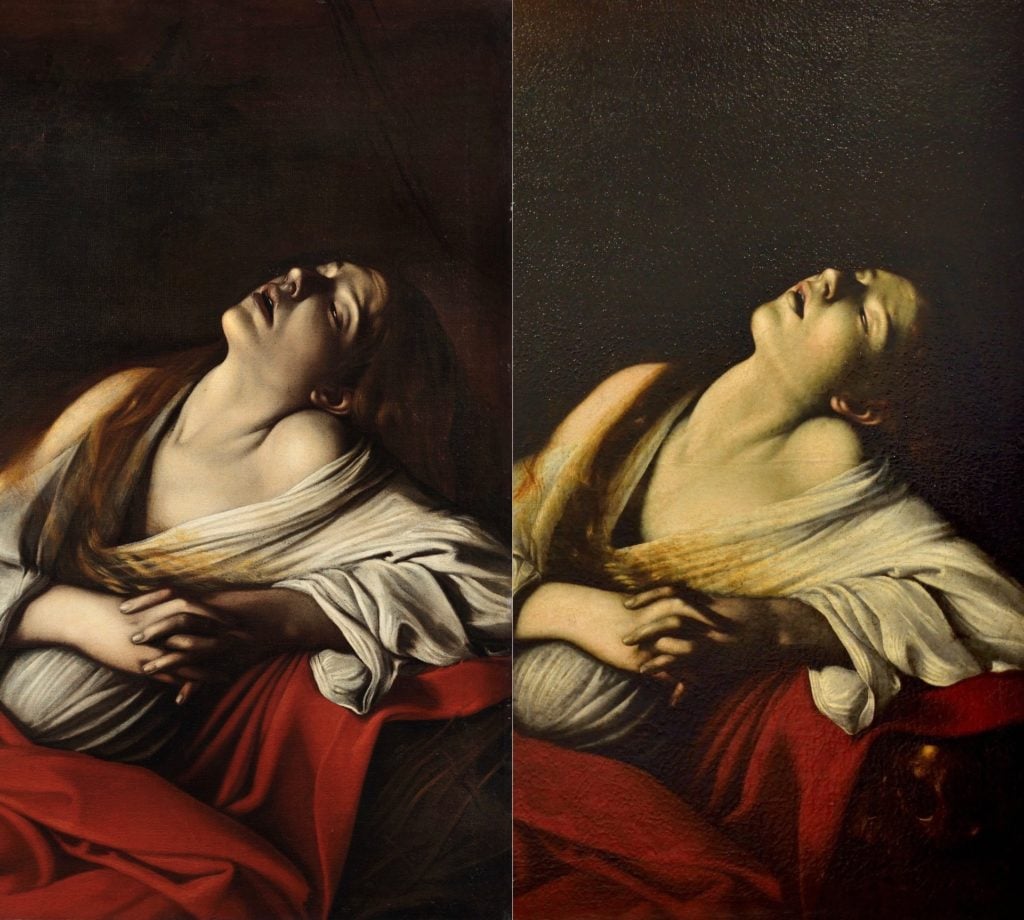Art & Exhibitions
Which of These Two Caravaggios Is the Real Thing? Shown Together in Paris, Twin ‘Mary Magdalene in Ecstasy’ Paintings Perplex
In displaying the two versions side by side, a Paris museum is letting the viewer decide.

In displaying the two versions side by side, a Paris museum is letting the viewer decide.

Henri Neuendorf

A scholarly debate over which of two versions of Caravaggio’s Mary Magdalene in Ecstasy is the real thing—or if neither are—has flared up since the Musée Jacquemart-André in Paris displayed the paintings side-by-side in its recent survey on the 16th-century Baroque painter.
In 2014, leading Caravaggio scholar Mina Gregori authenticated the first version, painted in 1606, after it was found in a private European collection. The press hailed it as the “discovery of the original Mary Magdalene in Ecstasy.“
The second, known as the “Klein Magdalena,” was found after World War II by critic Roberto Longhi, and was later backed by art historian Maurizio Marini. It is on loan to the show from a private collection in Rome.
Now experts are divided about whether the paintings came from the artist’s hand. “It is unusual to see both versions together,” Gert Jan van der Smam, a professor of art history at Leiden University, told the Art Newspaper. “It is therefore interesting to see them side by side. But to my mind, both are 17th-century copies after a lost or as yet un-traced original,” he said.
John Gash, an art historian at the University of Aberdeen, told the paper he was “skeptical” of the work Gregori attributed to Caravaggio in 2014.
“Most scholars,” van der Smam added, are “skeptical” about that one. (There are as many as eight known reproductions of the work by followers of the artist.)
But Gregori herself makes a case for the work in the show’s catalogue, writing that “the execution and the stylistic examination of the painting unquestionably confirm the hand of the master: the quality of the workmanship, the intensity of the expression.”
There is consensus among scholars, however, about the benefit of publicly comparing the works. “It is not unusual for exhibitions to show versions of a work for study,” Richard Spear, a Baroque expert at Princeton University, told the Art Newspaper. “Indeed, that is one of the best things exhibitions can do in order to advance scholarship. This is a good opportunity to form an opinion.”
Dawson Carr, who organized the Caravaggio show at London’s National Gallery in 2005, went further: “It doesn’t really matter what individual scholars conclude—the important thing is that the paintings are seen and compared.”